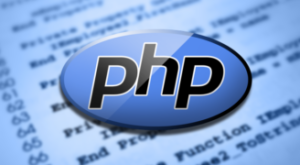The systemd PrivateTmp option for a php-fpm service affects write access to files outside the document root.
e.g. Red Hat Enterprise Linux 9 and PHP 8.2.13
For example, if var/tmp/myApp (say) is used for temporary files that are required to outlive a reboot, write access is prevented if true and permitted otherwise.
The systemd manual describes how a process specific subtree is used and mounted instead of a vanilla /tmp. It also refers to var/tmp, but I haven’t seen any evidence that this happens. If it did, wouldn’t this be a contradiction – because /tmp is cleared on boot?
Because I wish all files inside the document root to be read-only for reasons of security, how should php.ini and the php-fpm service be configured to permit write access to other paths, such as /var/tmp/myApp with PrivateTmp = true?

 Question posted in
Question posted in 

2
Answers
I’d prefer not to get too hung up on the semantics of what constitutes a temporary file or not. My question originated from PHP error logs
tempnam(): file created in the system's temporary directory. Various tests had led me to believe that the document root was a factor. However, on more reflection and experimentation, I now understand that this was incorrect and it’s a general question aboutsystemd. What is the point of having both sandbox versions of/tmpand/var/tmpif they are both cleared on boot? It just seems contrary to the convention of persistence for/var/tmp; of coursesystemdwould then need some kind of unique service id to honour it.This is contradictory. If you need files to outlive a reboot, then, by definition, they’re not temporary.
The general mechanism you’d use to solve this issue is to have your document root one level down from your project root, and then use a project-specific "temporary" directory at the project root. For example, consider the directory layout of this project:
If you now point your document root at the
publicsubdir rather than the/path/to/projectdir, then the web server process will have access to only the files below that point, which are only the files that will be directly served to clients. Everything else, including PHP source, lives outside the document root, and the web server doesn’t even know of its existence.But the php-fpm process runs (should, at least) as a different user than the web server process, so you can now control the access separately. For example, the web server user would only have read access to
publicwhile the php-fpm user would have write access tovar/cache. This would allow your PHP code to arbitrarily read/write files invar/cachethat would survive reboots, but the web client would never be able to directly request those files via some url likehttp://yoursite.com/var/cache/abcde.